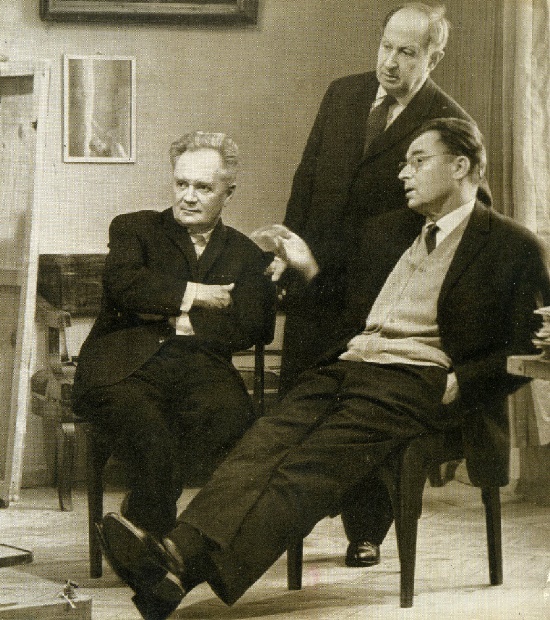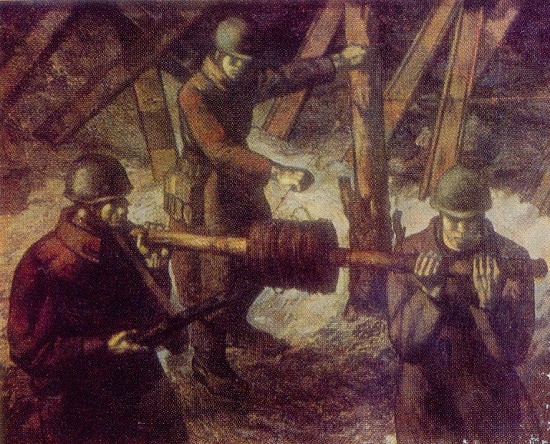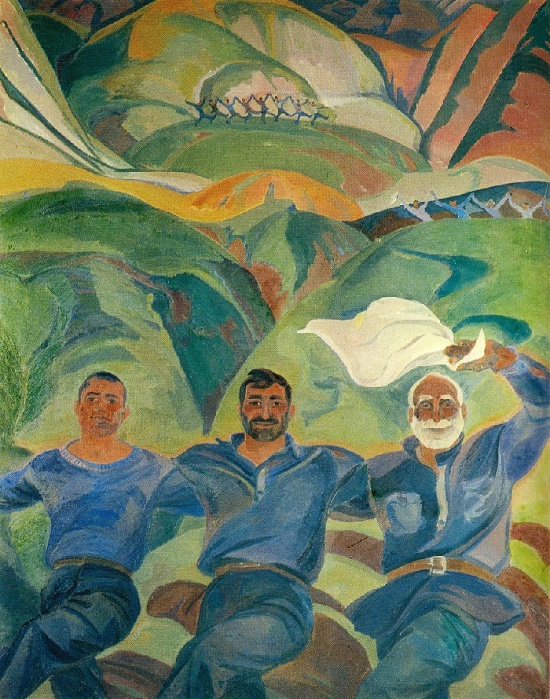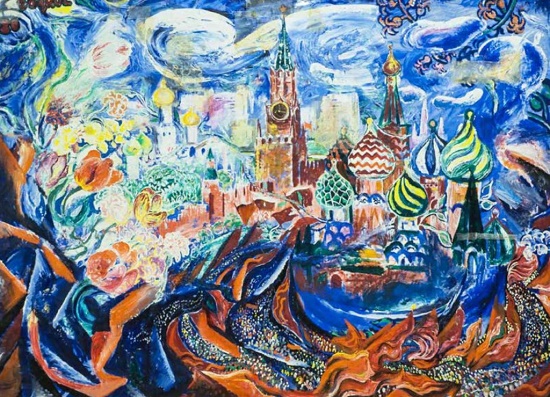Soviet artist Mikhail Ombysh-Kuznetsov
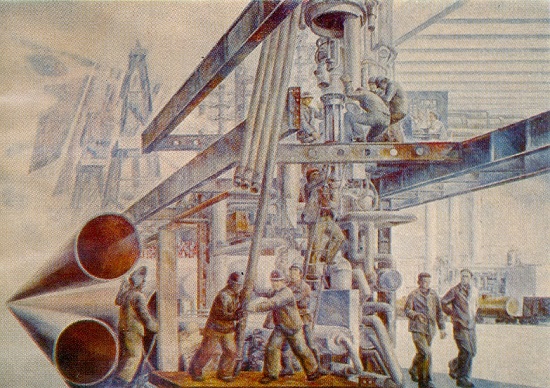
Oil of Siberia. (co-author V.S. Bukharov). 1976. Canvas, tempera. USSR Union of artists. Soviet artist Mikhail Ombysh-Kuznetsov (born 1947)
Soviet artist Mikhail Ombysh-Kuznetsov
The rapid growth of the role of Siberia in the social, economic, and cultural life of the country is one of the characteristic features of the Soviet reality of the 1970s. Creativity of the Siberian artists, who enriched the fine arts with many bright, original works, is an integral part of this process.
Among the young Siberian masters, who drew attention to the artistic public of the country, a prominent place belongs to the artist from Novosibirsk Mikhail Ombysh-Kuznetsov. His paintings, imbued with the spirit of constructive logic and a penchant for strong-willed restraint, masculine clarity of imaginative decisions, are also full of great emotionality. This inner spirituality, born from direct contact with reality, permeated with a living sense of Siberian everyday life, gives the artist’s works a special “imaginative space”.
Mikhail Sergeyevich Ombysh-Kuznetsov was born on November 21, 1947 in the city of Barabinsk, Novosibirsk Region. In 1965-1970 he studied at the architectural faculty of the Novosibirsk Engineering and Construction Institute named after V.V. Kuibyshev, and in 1970-1975 he taught at the department of drawing in the same institute. Member of the USSR Union of Artists since 1975. Laureate of several diplomas and prizes of the Central Committee of the Komsomol, the Union of Artists of the USSR, and the Ministry of Culture of the USSR.
Read more »

